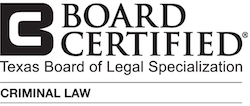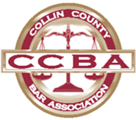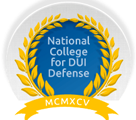Standardized Field Sobriety Tests
If you are pulled over and are under suspicion of Driving While Intoxicated by a police officer, you likely will be asked to submit to one or more of what are known as the Standardized Field Sobriety Tests (or the SFST's). Some of these tests might be “standardized” according to an agency referred to as NHTSA (National Highway Traffic Safety Administration), and others might not be standardized (according to NHTSA). NHTSA creates the exact guidelines for how the Standardized Field Sobriety Tests (SFST's) should be conducted by investigating officers. Officers use the performance of the "SFST's" to determine whether, in their opinion, they believe there might be probable cause for an arrest for DWI. These roadside tests are ideally designed to help determine whether an individual may have lost the normal use of their mental and/or physical faculties due to the introduction of alcohol (or from another intoxicating substance). Whether someone has lost the "normal use" of their mental/physical faculties, generally speaking, is the threshold for determining whether someone may be guilty of Driving While Intoxicated (also having a BAC over a .08 is another possible factor, but drivers are usually not asked to give a chemical test under after an arrest is made). Performing poorly on any portion of the SFST's usually will result in your arrest for Driving While Intoxicated.
The standardized portion of field sobriety testing usually consists of the following tests, in this order:
1. Horizontal Gaze Nystagmus (HGN)
2. Walk and Turn (WAT)
3. One Leg Stand (OLS)
A brief overview of these tests are described as follows:
Horizontal Gaze Nystagmus (HGN) Test
The HGN test is most commonly referred to as the "pen" or the "eye" test. When conducting the HGN the investigating officer usually will ask that you follow an object with your eyes, usually referred to as a stimulus, which is usually a small flash light or simply their finger. The amount your eyes jerk while following the stimulus theoretically would correlate to a level of intoxication.
The NHTSA manual itself states that there are numerous possibilities where Nystagmus is detected. There are 47 other types of Nystagmus, aside from Horizontal Gaze Nystagmus, and over 38 different causes. Yet police officers are only trained to detect the HGN.
There are at least 47 different types of Nystagmus, separate from Horizontal Gaze Nystagmus, including:
(1) Acquired; (2) Anticipatory (induced); (3) Arthrokinetic (induced, somatosensory); (4) Associated (induced, Stransky’s); (5) Audio kinetic (induced); (6) Bartel’s (induced); (7) Brun’s; (8) Centripetal; (9) Cervical (neck torsion, vestibular-basilar artery insufficiency); (10) Circular/Elliptic/Oblique (alternating windmill, circumduction, diagonal, elliptic, gyratory, oblique, radiary); (11) Congenital (fixation, hereditary); (12) Convergence; (13) Convergence-evoked; (14) Dissociated (disjunctive); (15) Downbeat; (16) Drug-induced (barbituate, bow tie, induced); (17) Epileptic (ictal); (18) Flash induced; (19) Gaze-evoked (deviational, gaze-paretic, neurasthenic, seducible, setting-in); (20) Horizontal; (21) Induced (provoked); (22) Intermittent Vertical; (23) Jerk; (24) Latent/Manifest Latent (monocular fixation, unimacular); (25) Lateral Medullary; (26) Lid; (27) Miner’s (occupational); (28) Muscle-Paretic (myasthenic); (29) Optokinetic (induced, optomotor, panoramic, railway, sigma); (30) Optokinetic After-Induced (post-optokinetic, reverse post-optokinetic); (31) Pendular (talantropia); (32) Periodic/Aperiodic Alternating; (33) Physiologic (end-point, fatigue); (34) Pursuit After-induced; (35) Pursuit Defect; (36) Pseudo spontaneous; (37) Rebound; (38) Reflex (Baer’s); (39) See-Saw; (40) Somatosensory; (41) Spontaneous; (42) Stepping Around; (43) Torsional; (44) Uniocular; (45) Upbeat; (46) Vertical; (47) Vestibular (ageotropic, geotro-pic, Bechterew’s, caloric, compensatory, electrical/faradic/gal vanic, labyrinthine, pneumatic/compression, positional/alcohol, pseudo caloric.
The 38 different causes of nystagmus are legally recognized, as judicially recognized in the case Schultz v. State, 664 A.2d 60, 62 (Md. Ct. Spec. App. 1995). In Schultz, the Court found that although the HGN test was both scientifically valid and reliable if performed correctly, the officer testifying in this case was not properly trained as an expert, and his testimony was therefore inadmissible. The court reasoned that when the HGN test is not performed correctly, the results are not reliable. Schultz v. State recognizes that there are at least 38 other causes of nystagmus including:
(1) problems with the inner ear labyrinth; (2) irrigating the ears with warm or cold water under peculiar weather conditions; (3) influenza; (4) streptococcus infection; (5) vertigo; (6) measles; (7) syphilis; (8) arteriosclerosis; (9) muscular dystrophy; (10) multiple sclerosis; (11) Korchaff's syndrome; (12) brain hemorrhage; (13) epilepsy; (14) hypertension; (15) motion sickness; (16) sunstroke; (17) eye strain; (18) eye muscle fatigue; (19) glaucoma; (20) changes in atmospheric pressure; (21) consumption of excessive amounts of caffeine; (22) excessive exposure to nicotine; (23) aspirin; (24) circadian rhythms; (25) acute trauma to the head; (26) chronic trauma to the head; (27) some prescription drugs, tranquilizers, pain medications, anti-convulsants; (28) barbiturates; (29) disorders of the vestibular apparatus and brain stem; (30) cerebellum dysfunction; (31) heredity; (32) diet; (33) toxins; (34) exposure to solvents, PCBS, dry cleaning fumes, carbon monoxide; (34) extreme chilling; (35) eye muscle imbalance; (36) lesions; (37) continuous movement of the visual field past the eyes, i.e.,looking from a moving train; (38) antihistamine use.
Walk and Turn (WAT) Test
The Walk and Turn is the test most people refer to as the "Walk the Line" test. During the WAT, the individual is asked to take 9 heel-to-toe steps forward, take a series of small steps to turn around, and then take 9 steps back, all in a straight line. The investigating officer will be looking for a series of 8 clues, which are listed as follows:
- Starts test too soon;
- Inability to balance during instructions;
- Failure to touch heel to toe;
- Stopping while walking;
- Stepping off line;
- Using arms for balance;
- Peforms turn incorrectly;
- Taking the incorrect number of steps.
If the investigating officer observes at least two "clues" on the WAT test, the conclusion will be that you are intoxicated. However, many of the "clues" noted in the WAT test could be attributed to many factors not associated with alcohol consumption, including possible physical injuries, fatigue, and/or illness. The NHTSA manual outlines that people with back problems, leg injuries, individuals older than 65, those over 50 pounds overweight, and/or those with inner-ear disorders, are not candidates for the WAT, and therefore should not have the test administered to them. Administering the WAT test to someone with footwear, such as high heels or boots, or performing the test on any unlevel surface, also would compromise the test, leading to invalid results.
One-Leg Stand (OLS) Test
During the One-Leg Stand test, an individual is asked to count out loud while raising one leg at least six inches off the ground. The investigating officer is looking for 4 clues, which are listed as follows:
- Losing balance;
- Hopping;
- Putting foot down;
- Sways while balancing.
Just like with the WAT Test, there are many reasons why someone might "fail" this test even if they haven’t been consuming alcohol. Investigating officers are taught this during their training at the academy, but usually will deny this fact on the witness stand at trial. Those over the age of 60, people who are 50 pounds or more overweight, those with certain medical conditions, fatigue, or injuries could fail the test due to having poor balance or a lack of coordination. The officer should have been trained to shine a flashlight on the ground to help the suspect, but if this light moves or is not steady, it would be very distracting and could affect one’s balance.
Investigating Officer Administration
If the investigating officer doesn’t follow the exact NHTSA’s guidelines in the administration and demonstration portion of the SFST's, their validity, and thus the reasonableness of the overall arrest decision, is compromised. The NHTSA manual very clearly mandates that if any of the required elements are deviated from, the overall results are COMPROMISED. The NHTSA manual states, in part, the following:
IT IS NECESSARY TO EMPHASIZE THIS VALIDATION APPLIES ONLY WHEN:
- THE TESTS ARE ADMINISTERED IN THE PRESCRIBED, STANDARDIZED MANNER
- THE STANDARDIZATION CLUES ARE USED TO ASSESS THE SUSPECT’S PERFORMANCE
- THE STANDARDIZATION CRITERIA ARE EMPLOYED TO INTERPRET THAT PERFORMANCE
Here, several factors may come into play that may affect the validation of the results. If the HGN test is not conducted EXACTLY according to specific NHTSA guidelines, the results are not valid. As well, investigating officers should give proper instructions and a proper demonstration of the WAT and the OLS test in the correct manner before an individual is asked to perform. Often investigating officers give incorrect, unclear, or out-of-order instructions on either the WAT or OLS test (or both).
Right to Refuse
It is crucial to know your rights if you ever consume alcohol and subsequently operate a motor vehicle. Always remember You Have The Absolute Right To Refuse ALL Field Sobriety Tests. Although this does not mean you will released and allowed to drive home (and will likely be arrested for suspicion of Driving While Intoxicated), you are preserving your chances of later contesting the charge in court. In many cases it is better to simply refuse the SFST's, than to provide the investigating officer more evidence to use against you. The SFST's, simply put, are designed for failure. Many non-intoxicated individuals cannot perform them under optimal conditions, let alone on the side of the road, under pressure, with a police officer shining his lights on you, and waiting to try and gather as much evidence as possible before actually making an arrest. Remember that the only possible reason for why an investigating officer would request that you perform these tests is because you are under suspicion of Driving While Intoxicated. In addition, most of the time even before the SFST's are even asked to be performed, the arrest decision has already been made by the investigating officer. Therefore, the officer already is under the belief that you are intoxicated, and he has already made the decision that you will eventually be placed under arrest.
Although in a few cases, you might want to submit to the tests to prove your sobriety, keep in mind that an officer can easily "misinterpret" something as a clue of intoxication, and his opinion is certainly one that a jury will be considering at trial. There are a myriad of reasons why you may not be a candidate for the SFST's. Certain medical and/or physical conditions may render you unable to perform optimally on the SFST's. Factors that may play a role in how well any specific individual might perform includes fatigue, nervousness, physical disabilities, road/street conditions, environmental conditions, wind, weather, inadequate footwear, weight, and age.
SFST Reliability
Dr. Lance Platt, a renowned expert and a certified SFST instructor, has conducted extensive studies on how well investigating police officers administer the SFSTs. Dr. Platt reviewed thousands of actual videos of police officers testing accused drivers, and concluded that 97% of the time the investigating officer incorrectly administered at least one of the three Standardized Field Sobriety Tests. Based on Dr. Platt's study it is easy to understand how incorrect administration of the SFST's can very easily lead to false-positive results.
Even if the SFST's are administered perfectly, evaluating performance and correlating the results to intoxication can still very much lead to an inaccurate conclusion. The basic premise of the SFST's is that if the driver is sober, he should be coordinated enough to pass the tests. This is untrue, because many things can affect your ability to perform on the SFST's, such as:
- Stress
- Fear of the police
- Nervousness
- Confusion Due to Unfamiliar Circumstances
- Illness
- Fatigue
- Prescription Medication
Most experts believe the SFST's should be used merely as a screening tool, and not as a final, and ultimate way to determine whether someone is intoxicated.
What To Do If Asked To Perform the SFST's
If you are asked to get out of your vehicle and to perform any one of the SFST's (including the HGN), politely ask to speak to your attorney, Carl David Ceder, at 214.702.CARL(2275) and/or at 469.2000.DWI(394). Politely refuse all roadside tests, and try to remain and stay as calm as possible. If you refuse the SFST's, you are likely going to jail. There is no way around this. However, remember you are providing the state very little evidence to later use against you. If you are taken to jail, simply call The Law Offices of Carl David Ceder immediately, when they let you have a phone call (or have a family member do so) and Carl, and his legal team, will help facilitate a fast and speedy jail release. In some situations, especially in Dallas and Collin County, you may be eligible for a "Writ Bond" - which can help facilitate a much faster release, than if you have to wait and actually see a Judge.
Contact Now
If you, or someone you know, has been accused, arrested, and charged with Driving While Intoxicated (DWI) anywhere in the State of Texas, please feel free to call 214.702.CARL(2275) or 469.2000.DWI(394) at your convenience to speak to a highly trained, and experienced Texas DWI Defense Attorney. Contact The Law Offices of Carl David Ceder to start mounting an effective defense against your charge of DWI. Call 214.702.CARL(2275) or 469.2000.DWI(394) now for an initial consultation and evaluation regarding the specific nature of your case.




















